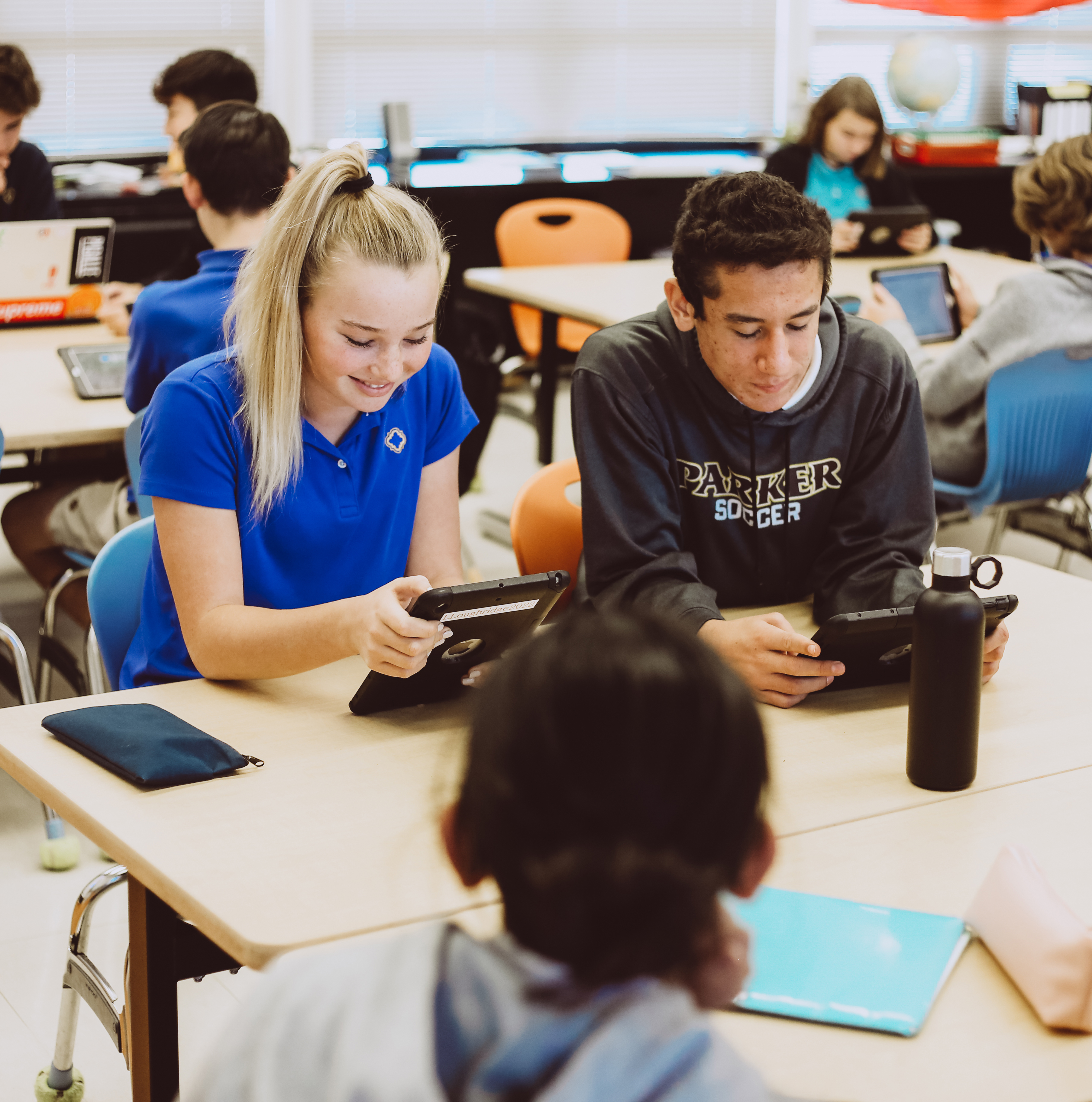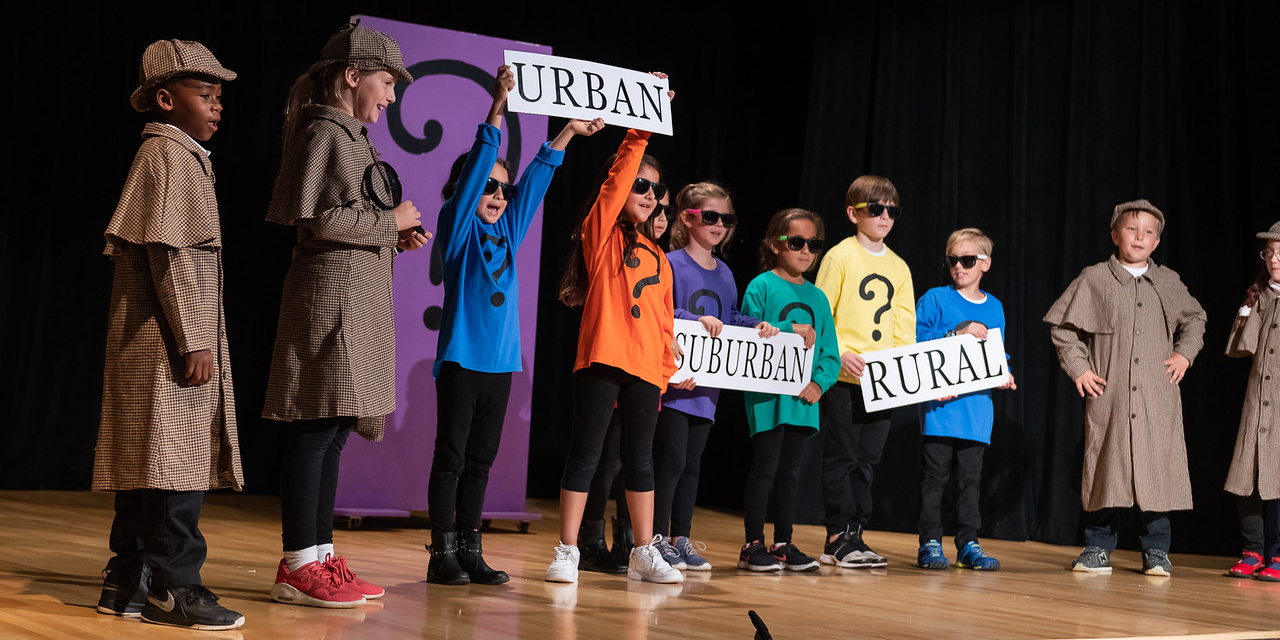



One of the major initiatives in our Strategic Plan is student wellness. Thanks to the good work of our faculty and staff on behalf of our students, Parker has made significant strides in addressing student wellness in many positive ways over the past few years, including: normalizing mental health issues and help-seeking behaviors; engaging the entire community as eyes and ears on student health and wellness; equipping students with long-term skills and not just college resume-builders; and adding student support structures and positions that work collaboratively on student learning and wellness.
In our 2013 Strategic Plan under the major initiative of Student Wellness, one of the goals we set for our School reads as follows: “Daily schedule optimizes instructional time, supports diverse course offerings, recognizes the importance of extracurricular activities and free time, ensures optimal student health and academic performance, and creates opportunities for collaboration.” Within this goal lies specific action items including, “Evaluate the class day start time in an effort to ensure the best possible learning environment.” and “Ensure sufficient time is allotted in the day to meet academic and non-academic (transitions, co-curricular activities, advisory, wellness, etc.) demands of a Parker education.”
In 2017-2018 Parker’s Leadership Team, along with the Head of School Advisory (a representative group of faculty and staff from all three divisions) were tasked with reviewing the literature and current research on school start time.
In the winter of 2017, the full Parker Leadership Team reviewed the research, feedback, and recommendation for a late-start from the Head of School Advisory as well as any comments and questions from the Lower, Middle, and Upper School leadership teams. In the final analysis, Parker agreed to a start time no earlier than 8:30 am for the 2019-2020 academic year. The reason for waiting until the 2019-2020 academic year to implement the new start time was twofold: 1) A new start time is a significant change and we wanted to provide sufficient time for all constituents to prepare for this necessary and beneficial change. 2) Parker could have the time needed to work out the new schedule (most significantly the end time) ensuring that all of the essential variables that create an optimal learning experience for our students could be preserved.
We have drafted an FAQ outlining the work completed to date, highlighting the key questions for consideration, and detailing the decision-making process and timeline for determining the optimal end time for 2019-2020 for the entire JK-12 Parker community. No small task, but one that we can get right.
As the 2019-2020 daily schedule (start times and end times) is at its core a JK-12 consideration, we will solicit input from faculty and staff over the next few months via the formal leadership groups on all three divisions: Lower School Leadership, Curriculum Leadership Team, Middle School Leadership, Upper School Leadership, 6-12 Department Chairs, and Head of School Advisory. These groups will use the FAQ (included below) to frame the discussions and solicit input.
The final decision rests with the Parker Leadership Team and will be influenced by the thoughtful input from all of our leadership teams. The goal is to have the start time and end time decision by late December 2018 so that we can share the 2019-2020 schedule with the entire community in late January 2019. As always, our eyes remain on the simple goal to prepare our students to live healthy, successful, meaningful lives. Central to this mission is student wellness and balance.
As we enter the upcoming holiday season, I hope that you and your family have the opportunity to share meaningful time together and take time to reflect on all that we have to be thankful for.
On that note, I invite you to add Parker’s Day of Giving to your calendar on Nov. 27. This special one-day event is an opportunity to support, recognize, and thank Parker’s faculty by making a contribution to the School of any amount in their honor. We hope you will join the spirit of holiday giving and think about Parker on Nov. 27.
With thanks,
Kevin
When and why did Parker decide to research the possibility of changing the start time of the school day?
One of the major initiatives in our Strategic Plan is student wellness. Over the past few years, Parker has made significant strides in addressing student wellness in many positive ways, including normalizing mental health issues and help-seeking behaviors; engaging the entire community as eyes and ears on student health and wellness; equipping students with long-term skills and not just college resume-builders; and adding student support structures and positions that work collaboratively on student learning and wellness.
While progress had been made, there remains more work to be accomplished on several fronts related to the student wellness and success including but not limited to: homework, course loads, extra-curricular activities, advisory, and school start times.
In our 2013 Strategic Plan under the major initiative of Student Wellness, one of the goals we set for our School reads as follows: “Daily schedule optimizes instructional time, supports diverse course offerings, recognizes the importance of extracurricular activities and free time, ensures optimal student health and academic performance, and creates opportunities for collaboration. “Within this goal lies specific action items including, “Evaluate the class day start time in an effort to ensure the best possible learning environment.” and “Ensure sufficient time is allotted in the day to meet academic and non-academic (transitions, co-curricular activities, advisory, wellness, etc.) demands of a Parker education.”
Over the course of the last decade, a substantial amount of research has been conducted on the correlation between school start times and student performance (academic, athletic, and otherwise) and student mental health and wellness.
Thus, in 2017-2018 Parker’s Leadership Team, along with the Head of School Advisory (a representative group of faculty and staff from all three divisions) were tasked with reviewing the literature and current research on school start time.
What was the start time recommendation and when was it made?
After this exercise, the full Parker Leadership Team met in December and reviewed the feedback and recommendation for a late-start from the Head of School Advisory as well as any comments or questions from the Lower, Middle, and Upper School leadership teams, and agreed to a start time no earlier than 8:30 am for the 2019-2020 academic year. The reason for waiting until the 2019-2020 academic year to implement the new start time was twofold: 1) A new start time is a significant change and we wanted to provide sufficient time for all constituents to prepare for this necessary and beneficial change. 2) Parker could have the time needed to work out the new schedule ensuring that all of the essential variables that create an optimal learning experience for our students could be preserved.
What did we learn from the research about the benefits of late start?
In short, the research was overwhelmingly in favor of a later start for schools. The general rule of thumb, endorsed by Centers for Disease Control and Prevention (CDC), American Academy of Pediatrics, the American Medical Association, and many other organizations and advocacy groups is that middle school and high school classes should start no earlier than 8:30 a.m. to allow students to get healthy sleep. Unfortunately, most students are not getting sufficient sleep. According to the CDC, in 2017 75.4 percent of high school students get fewer than eight hours of sleep on school nights, and 43 percent get six or fewer hours, an increase from the 2011, 2013, and 2015 surveys. The CDC recommends 9-10 hours of sleep per night for students. Based on the science of their circadian rhythm and natural sleep-wake cycles, most adolescents get their optimal sleep between the hours of 11:00 p.m. and 8:00 a.m. The potential negative effects of insufficient sleep are many. According to researchers at the University of Minnesota and the CDC linked later high school start times to significant decreases in teen illegal substance abuse, depression, and consumption of caffeinated drinks.
How were the students, faculty, and parents informed about the research?
In October 2017, we invited Dr. Rafael Pelayo of Stanford University to speak on the ever-growing science of sleep and its impact on optimizing student learning and increasing student wellness and general balance. Dr. Pelayo spoke to the Upper School student body and faculty, and hosted a parent talk (including Q&A) in Lawrence Commons on the Linda Vista campus.
Dr. Pelayo’s initial exposure to the science and medicine of sleep came as a medical student working with Dr. Michael Thorpy at the Albert Einstein College of Medicine. He joined the Stanford Sleep Disorders Clinic in 1993 as a fellow. In 2013, he was appointed as a clinical professor at the Sleep Medicine division of the Department of Psychiatry and Behavioral Science at Stanford. Dr. Pelayo’s clinical focus has been on the treatment of sleep disorders in patients of all ages. He has lectured nationally and internationally and has appeared frequently in television, radio, and in print. He serves currently on the board of the California Sleep Society. He has also been the chair of the Sleep Disorders Research Advisory Board at the National Center for Sleep Disorders Research at the National Heart Lung Blood Institute. Dr. Pelayo has chaired the pediatric special interest section of the American Academy of Sleep Medicine. Currently, he teaches a Stanford University Sleep and Dreams undergraduate course in collaboration with Dr. William Dement.
What is the process for determining the end time for the 2019-2020 year?
As the 2019-2020 daily schedule (start times and end times) is at its core a JK-12 consideration, in November and December we will solicit input from faculty and staff via the formal leadership groups on all three divisions: Lower School Leadership, Curriculum Leadership Team, Middle School Leadership, Upper School Leadership, 6-12 Department Chairs, and Head of School Advisory.
What are the critical variables impacting the determination of optimal end time?
While many, the most essential variables are: instructional time, passing time (between classes), advisory time, lunch time, and extra-curricular activities (including athletics) time. What they all have in common is time. Thus the bulk of the conversation has been on time allocation, resulting in us ultimately landing in one of two places: 1) The time we currently have committed to each of these variables is of equal importance; therefore, we will keep to overall length of the day as it currently stands; or, 2) We can afford to decrease the amount of time allocated to one, some, or all of these variables without compromising our commitment to affording our students with the best possible learning environment resulting in a shorter day (total minutes) than we currently have.
What impact, if any, would a possible later end time have on transportation?
Our Director of Transportation has reviewed all possible end times and is confident that we can accommodate any schedule that is determined to be in the best interest of the students.
What impact, if any, would a possible later end time have on Parker athletics?
If the end time is later, practice time will be held later in the day. Other than the sports that are limited due to inadequate lighting (i.e. golf), all of our indoor and outdoor sports will be able to practice and compete just as we do today.
What, if anything, will happen to Late-Start Wednesdays?
We plan on keeping late-start Wednesdays (approx. 9:00 am) with the same end time as the rest of the week.
Are other independent schools moving toward later start times and end times? What are we hearing about their experience?
Yes. Nationally, we are seeing schools (public and private) move to later start and end times for the same reasons we have learned in our research. In October, Parker sent faculty and staff on visits to other JK-12 independent schools, some of whom had moved to later start and end times (i.e. Campbell Hall who starts at 8:50 am and ends at 3:40 pm, with a 9:30 am late start on Wednesday).
Below are excerpts from a recent national independent school listserve about the challenges and benefits of moving to later start and end times:
“We moved to an 8:30 start this year with a 3:30 dismissal. Homework and sleep consistency are variable but our community (faculty, students and parents) have expressed appreciation for the shift.”
“Ditto for us. We notice a healthier balance. Often our students are here on campus before 8:30 but they arrive and are more prepared to engage in class with the new start time.”
“Our school day goes from 8:30 to 3:45 for all grade levels and with our homework limits sleep times are consistent but never enough. Early dismissals for away games are also a problem, but a manageable one.”
Will the self-study process inform the final decision about the daily schedule?
Yes, the self-study process is a powerful tool for identifying the strengths and needs of the Parker community and is already being applied to our questions around the daily schedule. In early October thirty Parker faculty and staff visited eight excellent peer schools across California. At least two schools Parker is familiar with begin at 8:30 am or later and end near 4:00 pm. We will be learning from those schools and reaching out to discover other schools who have successfully managed this type of schedule change.
When will the decision be final? Who will make the decision? When will the daily schedule for 2019-2020 be released?
While the final decision on this JK-12 matter rests with the Parker Leadership Team, it cannot be made without the thoughtful input from all of our divisional leadership teams and their faculty. Formal conversations within and across the divisions will continue over the next few months with the expectation that the final decision on the 2019-2020 end time will be determined in March of 2019.
The following is a schedule of our research and timeline, along with the opportunities we have carved out to keep the community updated on our progress:
- December 2018: Administer survey for MS/US faculty and staff, US students, and Grade 5-12 parents.
- January 2019: Analyze survey data and determine key issues, concerns, and ideas.
- February 2019: Conduct follow-up data gathering as appropriate using a variety of strategies and existing internal structures (leadership teams, student support teams, athletics, arts, and divisions), and reach back out to Upper School students and parents through one-on-one conversations, small group sessions, divisional discussions, Grade 6-12 meetings, and/or surveys.
- January to March 2019: Provide updates on progress to faculty and staff, US students, parents, and trustees.
- Thursday, January 24, 2019: Provide updates to the Strategic Initiatives Committee of the Board of Trustees
- Wednesday, February 6, 2019: Provide updates to Grade 6-12 faculty and staff and US students
- Friday, February 8, 2019: Update to PA Executive Board
- Wednesday, February 27, 2019: Update to Grade 6-12 faculty and staff; update US students
- Wednesday, March 6, 2019: Update to Grade 6-12 faculty and staff on progress
- Make a recommendation for the 2019-2020 Daily Schedule to the Parker Leadership Team no later than March 15, 2019; communicate the 2019-2020 Daily Schedule to Parker community.
Will the 2019-2020 schedule be the schedule going forward for the next few years?
Yes, with the same start time but not necessarily with the same allocation of time and end time as the 2019-2020 schedule. The Parker Leadership Team with the Middle School Leadership Team and Upper School Leadership Team are conducting a study of the current 6-12 daily schedule to determine if the daily schedule with its structure is optimal for our students taking into consideration the impact of the later start to the academic day. Comprehensive reviews of daily schedules is a regular part of a cycle of continuous reflection in schools. Our last daily schedule review took place in 2013.
